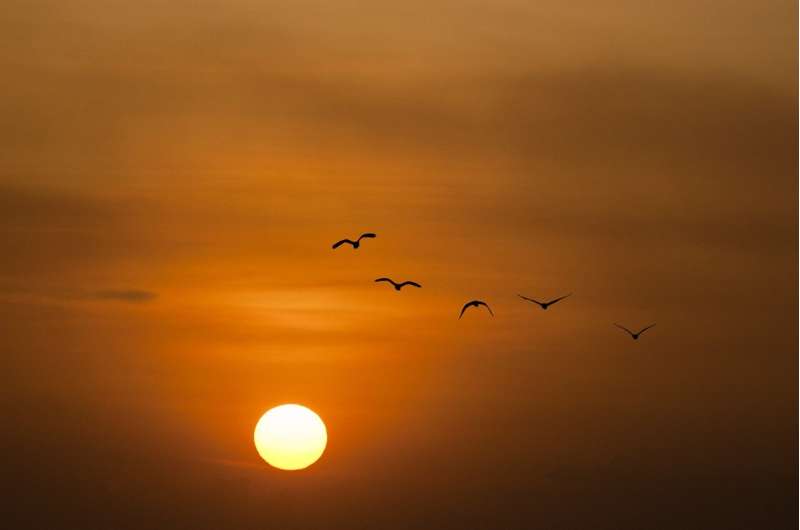This article has been reviewed according to Science X's editorial process and policies. Editors have highlighted the following attributes while ensuring the content's credibility:
fact-checked
trusted source
written by researcher(s)
proofread
Migratory birds are on the move and nature-friendly farms can help them on their way

Every spring, hundreds of thousands of birds leave their winter habitat on Poyang, the largest freshwater lake in China, and fly north over the most densely populated region on Earth to reach their breeding grounds in Siberia. As with any long-distance journey you might take, these birds need to make stops where they can find a good meal and a chance to refuel.
Migratory birds must make use of food that is only available seasonally. Grass-eating birds like geese follow fresh, green shoots that appear as the season unfolds and the geese move northwards. The brief window when this young, spring grass is at its most nutritious and abundant can last as little as three weeks.
Such a fine-tuned strategy can become a liability. Geese can only eat when they arrive in the right place at the right time, but climate change has disrupted when and how long this seasonal food source is available. Migratory birds may arrive too late in one area if rising temperatures have ushered spring in earlier, for example. If birds cannot replenish their energy stores during migration they risk their ability to breed successfully when they reach their destination—and could even starve.
Along with colleagues, I have investigated the impact of climate change on 16 migratory waterfowl in Asia over the past 21 years. We compared how well a series of stopover sites on their migration route would fare as food sources as the climate changes and found that it is challenging for birds to solely rely on eating enough tasty grass to make the journey safely.
Fortunately, in other research which involved attaching satellite tracking devices to migratory geese and swans, we discovered other food sources on their route from Lake Poyang to Siberia.
Leftover seeds can help birds breed
I tagged 246 birds in total: 102 greater white-fronted geese, 74 tundra bean geese, 58 swan geese (an endangered species) and ten tundra swans which stopped over in the Northeast China plain before heading to their breeding grounds in Siberia.
Some birds can stay over a month in this region. Vast wetlands were once common here, offering important foraging and roosting areas for east Asian waterbirds preparing for the next leg of their journey to the high Arctic. Most have since been converted to cropland growing soybeans, corn, and rice.
The loss of wetlands as farmland has expanded and is a worrying trend globally. It has forced waterbirds to turn from natural vegetation to agricultural land as a source of food.
In the Northeast China Plain, migrating birds eat seeds left over after harvesting. As soon as the snow melts, these seeds are ready for hungry beaks to dig out. Leftover seeds mean that birds which do arrive before spring has started can still find sufficient food.
In fact, we found that birds tend to forage on seeds first and then shift their diets to spring vegetation as it emerges, taking advantage of both wetland and farmland habitats. Farmland seeds will become more and more important as natural habitats decline.
Mechanized harvests, which tend to leave more seeds in the field, could provide more food for birds. But protecting wetlands from destruction is still critical, and that will require limiting how much farmland is reclaimed and the intensity of cattle grazing. Lowering these forms of disturbance and encouraging bird-friendly tourism would help swans and geese use both types of habitat during their stopover.
If healthy wetlands accompany farmland, birds can eat natural vegetation when farmers sow their crops and so minimize their impact on crop yields. Seeing birds as part of the landscape, and not as intruders on farmland, can help preserve this biodiversity on the wing.
Provided by The Conversation
This article is republished from The Conversation under a Creative Commons license. Read the original article.![]()


















